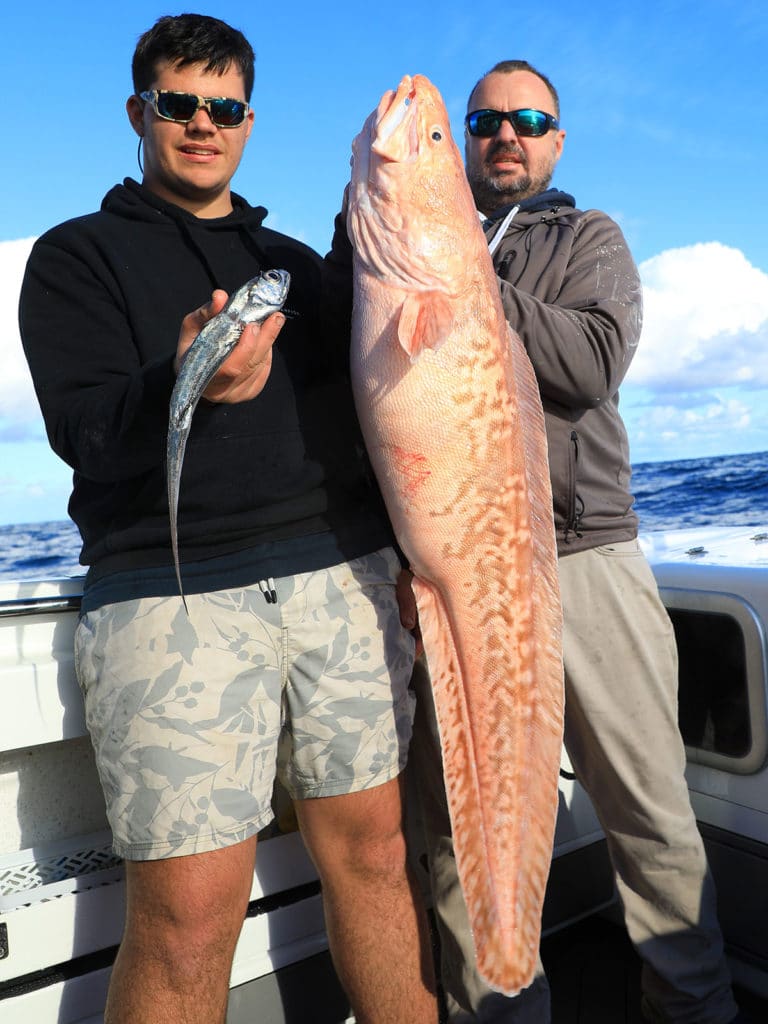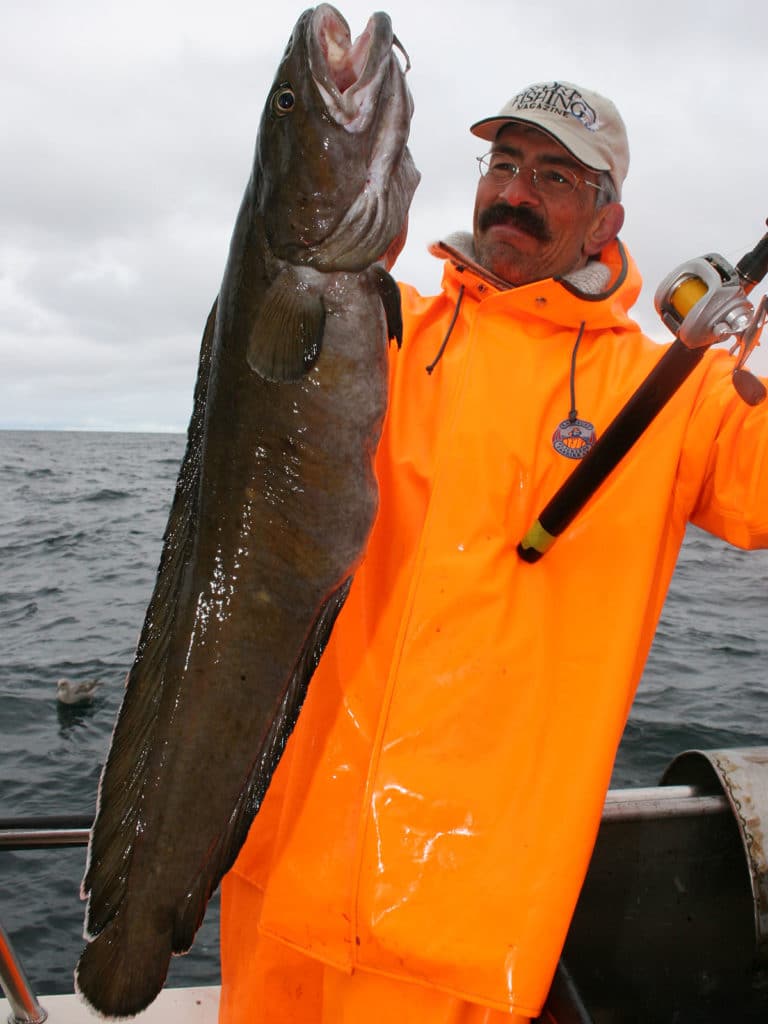
Salt Water Sportsman reader Al McGlashan (also a contributor and professional fishing journalist) in Australia submitted this photo of a very cool specimen of swordfishing bycatch. While dropping to nearly 2,000 feet of water off southern Oz, he pulled up this interesting fish. McGlashan says broadbill anglers in that area catch these fairly often at such depths, and identifies the fish as a “cusk.”
Curious to learn more of McGlashan’s cusk, we checked in with our Far Pacific fish facts expert, Ben Diggles in Australia. The fish is a Genypterus blacodes, properly known as a ling — in this case, a pink ling — but also widely called cusks or cusk eel. Diggles says the species is caught mostly in commercial fisheries with trawl nets, longlines and droplines. That suggests they are good eating, to which McGlashan attests, calling them “sensational” for their succulent flesh.
Pink lings have been caught weighing at least 50 pounds (and reaching nearly 7 feet in length). As far as the world record … there is none! If Al caught his manually (vs. an electric reel), that fish could have qualified and been the first world record for G. blacodes.
McGlashan says that, in addition to frequenting the waters off southern Australia, pink lings occur in much of the southern Pacific, from New Zealand to South America, and in the southern Atlantic (off Brazil, Argentina, the Falkland Islands). They feed mainly on crustaceans such as deepwater prawns and smaller fish, particularly grenadiers.

Although as the second photo shows, a species known as European ling (also cusk) in the North Atlantic not only bears the same common name but a marked resemblance to the pink ling. However, the two types of fish are unrelated. Also, the European ling grows considerably larger (with the world record at 88 pounds, 6 ounces, from the Shetland Islands, though lings over 100 pounds have been taken).









